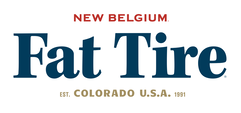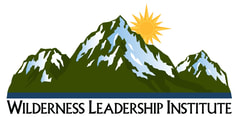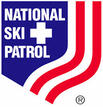Snowpack Summary January 20, 2023
Posted by Allen Giernet @ 6:40 am (this summary expires in 24 hours)
This summary applies to backcountry areas only.
The Bottom Line –
A break in the storms has settled in with cold days and colder nights. Our number one concern is fast, firm, icy conditions with slide for life hazards likely. The avalanche hazards will be settling with time but wind slab avalanches may remain possible near ridges and leeward sides of gullies at higher elevations. Travel in the mountains could be challenging due to varying conditions. Extra caution and conservative decision making is advised.
With significant warming forecast for this weekend, Wet Snow Avalanches will enter into the picture on Solar facing aspects E, SE, S, SW and W, slopes due to rapid warming and sun input for Saturday and Sunday.
Please share your observations with us at the avalanche center Submit Reports page.
Posted by Allen Giernet @ 6:40 am (this summary expires in 24 hours)
This summary applies to backcountry areas only.
The Bottom Line –
A break in the storms has settled in with cold days and colder nights. Our number one concern is fast, firm, icy conditions with slide for life hazards likely. The avalanche hazards will be settling with time but wind slab avalanches may remain possible near ridges and leeward sides of gullies at higher elevations. Travel in the mountains could be challenging due to varying conditions. Extra caution and conservative decision making is advised.
With significant warming forecast for this weekend, Wet Snow Avalanches will enter into the picture on Solar facing aspects E, SE, S, SW and W, slopes due to rapid warming and sun input for Saturday and Sunday.
Please share your observations with us at the avalanche center Submit Reports page.

Wind Slab avalanches are the release of a cohesive layer of snow (a slab) formed by the wind. Wind typically transports snow from the upwind sides of terrain features and deposits snow on the downwind side. Wind slabs are often smooth and rounded and sometimes sound hollow, and can range from soft to hard. Wind slabs that form over a persistent weak layer (surface hoar, depth hoar, or near-surface facets) may be termed Persistent Slabs or may develop into Persistent Slabs.
General Summary
#1 problem Icy Conditions due to cold days and overnight hard freezes. This will bring fast firm slide for life conditions. Use of ice axe and crampons is recommended with the skils to use them. Reports have indicated a firm rain crust with a dusting of snow on top at elevations below 8,000’. Slide for life scenarios are one of our biggest hazards in the So Cal mountains. More rescues are initiated during the winter time due to these conditions than any other hazard.
#2 problem will be Wind Slab avalanches on Northeast to Northwest aspects due to the moderate to strong Southwest winds. Wind slabs can be possible on any aspect due to topographical influences look for the signs of drifting and blowing snow, wind textured surfaces and pillowed snow below ridges and on sides of gullies. If these signs are present avoid those slopes and stick to lower angle terrain <30°. Time will have allowed this problem to settle some but the possibility of triggering a Wind Slab does still exist. Pay attention to the signs listed above and make decisions based upon your observations.
There will be a mix of conditions and using your own judgement and observations will be key. Adding to the problems is that it will still be early season conditions at the lower elevations with exposed obstacles so a slip and fall can bring hazardous consequences. Exercise caution if venturing out into the mountains and use avalanche protocols, travel with a partner and bring your beacon, shovel and probe.
Exercise caution on slopes over 30° as these conditions will exist throughout all mountain ranges. Always exercise caution when entering into winter mountain areas. Bring a Beacon Shovel and Probe and know how to use them. Travel with a partner and make conservative decisions.
#1 problem Icy Conditions due to cold days and overnight hard freezes. This will bring fast firm slide for life conditions. Use of ice axe and crampons is recommended with the skils to use them. Reports have indicated a firm rain crust with a dusting of snow on top at elevations below 8,000’. Slide for life scenarios are one of our biggest hazards in the So Cal mountains. More rescues are initiated during the winter time due to these conditions than any other hazard.
#2 problem will be Wind Slab avalanches on Northeast to Northwest aspects due to the moderate to strong Southwest winds. Wind slabs can be possible on any aspect due to topographical influences look for the signs of drifting and blowing snow, wind textured surfaces and pillowed snow below ridges and on sides of gullies. If these signs are present avoid those slopes and stick to lower angle terrain <30°. Time will have allowed this problem to settle some but the possibility of triggering a Wind Slab does still exist. Pay attention to the signs listed above and make decisions based upon your observations.
There will be a mix of conditions and using your own judgement and observations will be key. Adding to the problems is that it will still be early season conditions at the lower elevations with exposed obstacles so a slip and fall can bring hazardous consequences. Exercise caution if venturing out into the mountains and use avalanche protocols, travel with a partner and bring your beacon, shovel and probe.
Exercise caution on slopes over 30° as these conditions will exist throughout all mountain ranges. Always exercise caution when entering into winter mountain areas. Bring a Beacon Shovel and Probe and know how to use them. Travel with a partner and make conservative decisions.
General Mountain Weather Forecast |
Weather Page Link
Click on the links below for the latest information
Click here for this Season's Snow Pack Summaries
To better understand the challenges and potential variability over the large area we are producing information for please read our Snowpack Summary - Format and Limitations
Disclaimer:
This Bulletin is designed to generally describe conditions where local variations always occur. Travelers are advised to exercise caution and make slope specific evaluations. As always, please treat this bulletin with appropriately guarded skepticism and make your own assessments. Help to provide more information to the community by reporting your observations
This Bulletin is designed to generally describe conditions where local variations always occur. Travelers are advised to exercise caution and make slope specific evaluations. As always, please treat this bulletin with appropriately guarded skepticism and make your own assessments. Help to provide more information to the community by reporting your observations
Latest Observtions
Click on the observation to go to the full report
|
Observation type
Snowpack Location - Waterman Ski Area Date (yyyymmdd) - 20230119 Comment - Snow pit and conditions description Snow pit near the base of Waterman. 9am 1/19/21 NE aspect 6944’ Top Dust on 2 inch sun crust 2-3 inch 4F sugary layer 0.5-1inch rain crust 1 inch 1F snow 7-8 inches P hard consolidated snow Ground Above freezing temps Wind 0-5mph Clear skies Had decent skiing on shallow snow in the late morning on a S facing aspect near the same elevation. Had very firm but enjoyable conditions on N/NE aspects in the early afternoon at Waterman. Top melt-freeze crust was cracking a bit on the skin up but only broke through a couple times on the way down. |
Observation type
Snowpack Location - Big Pines Date (yyyymmdd) - 20230117 Comment - Comment Lunchtime tour on Tuesday to scope out the snow that fell late Monday. This round of precip was much colder and thankfully not followed by rain or heavy winds. From 7000-7500 I'd estimate 5-8cm of soft, dry snow fell on a base of refrozen mank. Above 8k it was closer to 10-15cm. Wind loading on NE aspects continues to be the big takeaway, with large mounds of drifted snow and pillows evident near ridgelines. One obviously wind loaded test slope I stomped on cracked immediately and propagated several feet in each direction (see photo). Other areas closer to my turnaround point at 8200ft had large cornices standing 130cm+ high. Will continue to monitor for how the next period of dry, cool days affects the current soft snow surface. |
Observation type -
Snowpack Location - Big Pines Date (yyyymmdd) - 20230116 Comment - Mother nature has the last laugh (again.) Early AM tour fueled by the prospect of some soft boot-top turns from snowfall that started late afternoon on 1-15-23. From what I can tell, approximately 10-20cm of ~10:1 snow fell from Sunday afternoon into the early AM hours of Monday. Then around 2am a blast of warm wind raised temps above freezing well above 7k ft, soaking the new snowfall with rain. Unclear at this time where the rain/snow line was in the SG mountains, although I would venture to guess at least 8k, if not higher. Winds were absolutely howling over the ridgeline, so my partner and I stayed well below to avoid the 40-50mph blasts. The snow that did fall was quite impressive, and all but the biggest bushes and rocks are now fully covered, even at a moderate altitude of ~7500'. Wind transported snow was evident in the form of small cornices and drifted in pillows--presumably occurring before the rain locked things into a wet, manky mess. A quick pit dug at ~7300ft revealed 45cm of snow with pronounced melt/freeze layers punctuating our various storms this season. Rain has saturated the top 5cm of snow (which likely started as much more). Impromptu CT yielded a Q2 shear at 20cm, on what appears to be the same weak layer of graupel sitting atop an old rain crust. (I observed a failure on the same layer on this slope ~2 weeks earlier). tl;dr - yes, we got snow, but the skiing still mostly sucks. Higher elevations may have soft, dry snow, although I suspect the primary concern will be wind slabs from the strong SW winds sitting on touchy melt/freeze layers from the warm AR events earlier in the season. Fingers crossed that things turn around for us in Feb-Mar. |
Observation type
Snowpack Location - Heart Bar Peak Date (yyyymmdd) -20230115 Comment Toured along the 38 near Heart Bar Peak. On my way up, saw several storm / wind slabs on NW aspects. Due the weather and conditions I stayed a lower elevation, low angle terrain in the trees and found fresh powder. Stomping on the new snow caused some shooting cracks. I managed to trigger a very small storm slab. |
General Caution
You should always use safe terrain management and carry avalanche rescue equipment in the backcountry. Most avalanches are triggered by someone in the party or the victim. Practice with your rescue gear often and be prepared should the worst happen. Though we do not have an avalanche forecast center in this area as of yet, the information posted and shared here as well as the resources available on this site will help to make informed decisions for your backcountry travels. Use avalanche forecasts in your travels wherever available and be aware that avalanche ratings are general information. Elevation, location, geographic variability’s, slope aspect and angle all have effects on the particular area you travel in. This is only one piece of the information you should use in your decision making process. There is no substitute for avalanche education, for more resources and information as well as education please refer to our resources page.
You should always use safe terrain management and carry avalanche rescue equipment in the backcountry. Most avalanches are triggered by someone in the party or the victim. Practice with your rescue gear often and be prepared should the worst happen. Though we do not have an avalanche forecast center in this area as of yet, the information posted and shared here as well as the resources available on this site will help to make informed decisions for your backcountry travels. Use avalanche forecasts in your travels wherever available and be aware that avalanche ratings are general information. Elevation, location, geographic variability’s, slope aspect and angle all have effects on the particular area you travel in. This is only one piece of the information you should use in your decision making process. There is no substitute for avalanche education, for more resources and information as well as education please refer to our resources page.






















